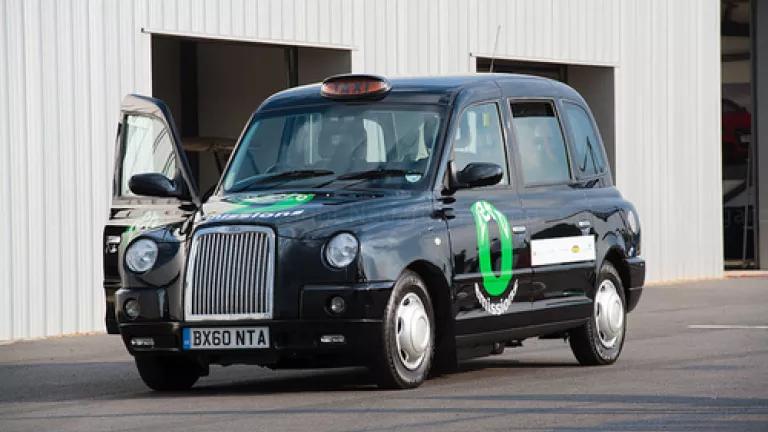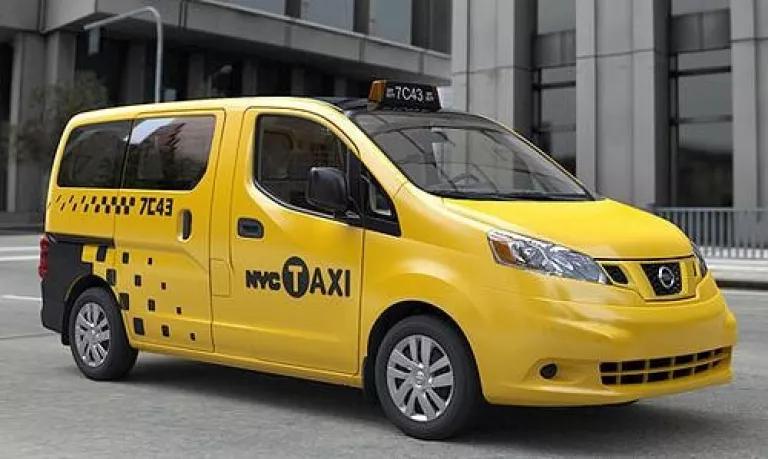
As the world watches the Olympic Games over the next two weeks, some will be glued to their television screens watching Ryan Lochte race to become America’s new swimming hero, while others wait eagerly to watch Queen Underwood and other US women fight it out in the boxing competition (yes, it’s a new sport this year!).
However, here at NRDC NY, we will be focusing on another event: the greening of the Olympics and of London, and how these games will compare to the results of past host cities.
With more than half of the world’s population now living in cities, the Olympics represent a highly visible opportunity to promote cutting-edge models of urban sustainability that can be replicated around the globe.
Some reports indicate that the London Games will not live up to the greening standards it promised when it made its bid in 2005.
But at least in one area, London is seeking to sprint ahead of New York and other world cities: the greening of its taxi fleet.
For the duration of the games, five zero-emission hydrogen fuel cell cabs will be roaming the streets of London. These redesigned classic black London cabs will be powered by a combination of a hydrogen fuel cell system and a lithium battery pack, and will only emit water from their tailpipes. They reportedly can travel a full day of operation (up to 250 miles) without going through the five-minute process of refueling.
This green taxi demonstration initiative has been in the works for a long time. In 2004, a hybrid diesel electric vehicle was unveiled on the streets of London, reducing air pollution by 90% in comparison to London’s original black cabs.
A year later, after winning the bid for the 2012 Olympics, the city recognized that even bigger steps had to be taken to reduce the amount of pollution that would inevitably result from the overcrowded and traffic-jammed city.
One result was the experimentation with the new hydrogen fuel cell cabs. In another effort to reduce emissions, London participated this summer in Nissan’s 2012 “Big Turn On” campaign to promote the use of electric vehicles (EVs). On June 23rd and 24th, Nissan LEAFS offered free taxi rides to demonstrate the amount of money that EVs can save, and to gather data on EVs as a potential taxi of the future.
Back here in New York City, where officials are apparently now considering bidding for the 2024 Summer Olympic Games, our green taxi future remains uncertain.
As I’ve previously blogged, New York City now has 5,000 hybrid yellow taxis (40% of the total fleet), which significantly cut air pollution, noise and our gas usage. Most importantly, with global warming projections getting more and more dire, the hybrid yellow taxis showcase one concrete way we can wean ourselves off our dependence on fossil fuels.
However, these taxis will be phased out over the next several years through the city’s new “Taxi of Tomorrow” program. Under this program, every New York City yellow taxi will be a single model – the Nissan NV200.

On the positive side, the initial version of this conventional, non-hybrid vehicle gets roughly double the gas mileage (25 mpg) of the long-used Ford Crown Victoria. The new taxi model also incorporates enhanced comfort and safety features. Further, Nissan – which has voiced a strong commitment to electric cars-- has indicated it could produce an all-electric version of the NV200 by 2017 and will also soon launch a pilot program to test six all-electric Nissan LEAFs cabs in the city.
But as things now stand, it is not clear that the final agreement between New York City and Nissan to implement the Taxi of Tomorrow program will offer a path forward to strong hybrid or electric-only taxis throughout the fleet. Thus, at the moment the new taxi is a step backwards from an environmental standpoint based on both fuel efficiency and tailpipe emissions.
To be sure, a series of federal court lawsuits by taxi owners has slowed New York City in its efforts to promote more environmentally friendly taxis. But city officials still have viable options to continue greening NYC’s taxis, building upon the considerable success they have had to date. It’s not too late for New York and Nissan officials to ensure that Gotham City will not fall behind London and other world cities in its sustainability efforts around its iconic taxi fleet.
So, let’s all hope that whether or not NYC wins the 2024 Olympic bid, we won’t have to wait 12 years for New York City to go for gold in greening its taxis.
I greatly appreciate the assistance of Lily Herzan, an intern at NRDC, in drafting this blog.
To keep up with New York work online: Please visit our website at www.nrdc.org/newyork, and follow us on Facebook and Twitter.

